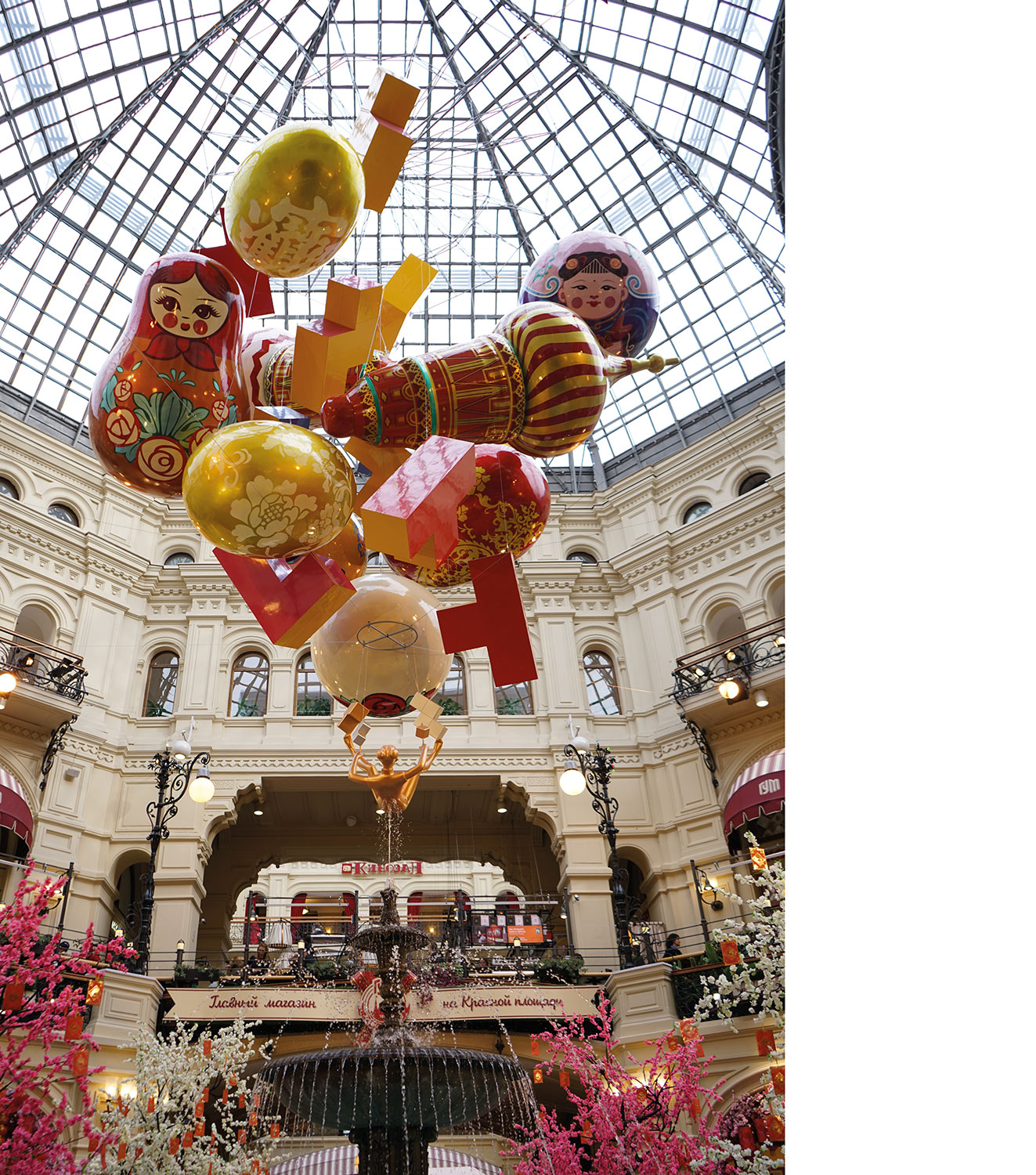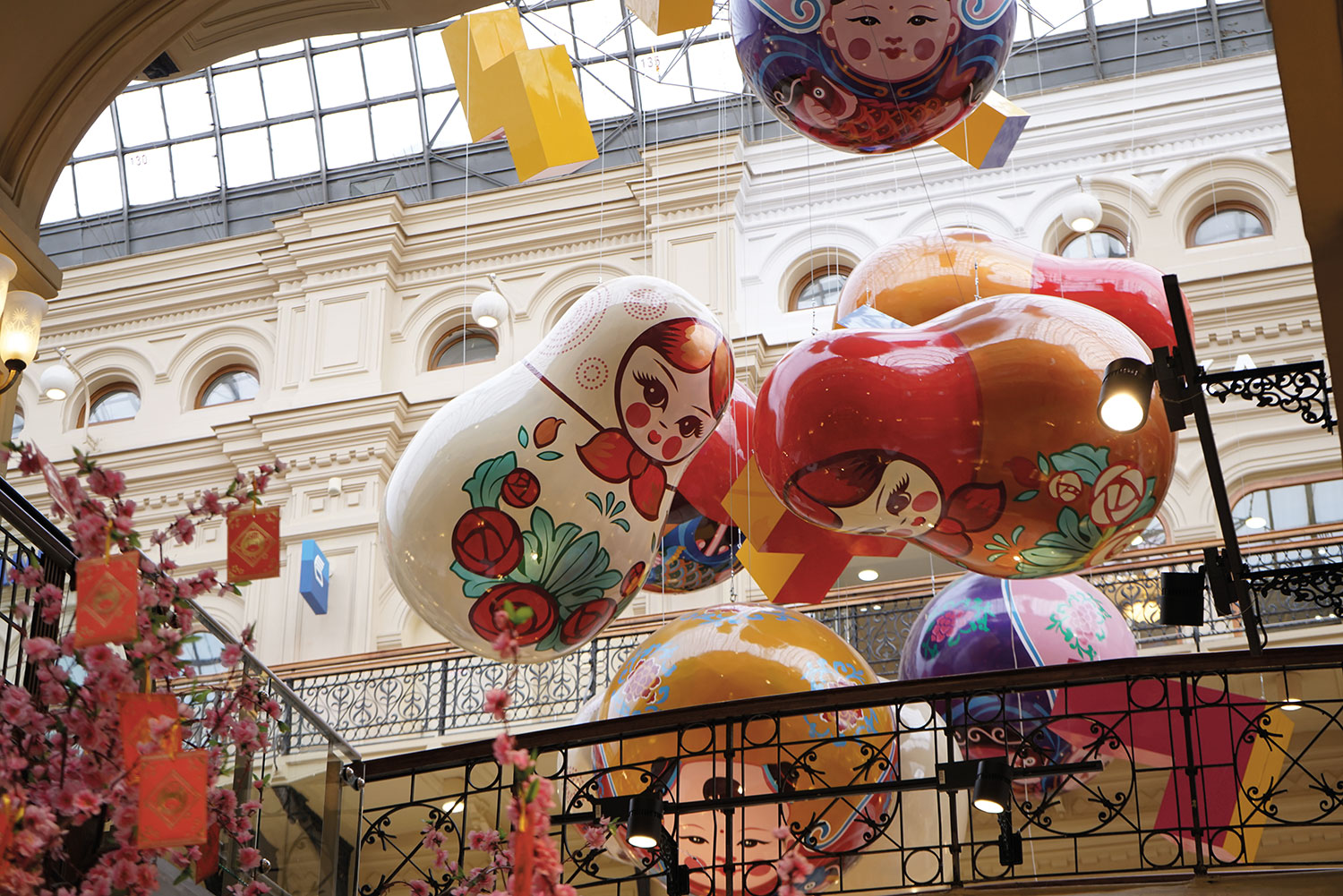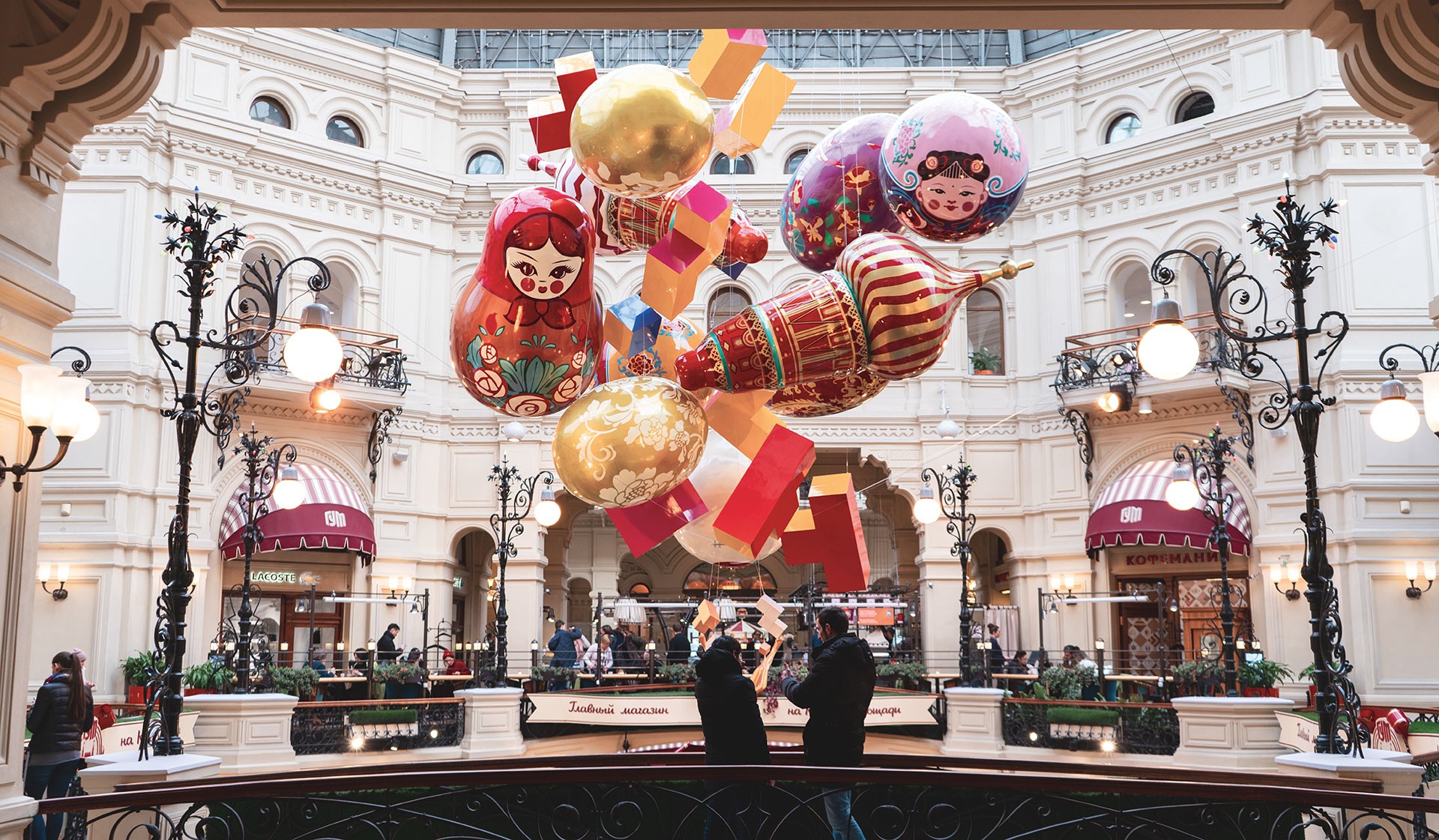Jacky Tsai X GUM Installation
GUM Department Store, Red Square No.3
21st Feb 2018
Moscow
In February 2018, Tsai was invited to bring his work to Russia by creating a series of bespoke large-scale sculptures and installation works that were to be exhibited at Moscow’s landmark department store GUM, to coincide with Chinese New Year.
By exhibiting his work in such a commercial space, Tsai looked to decrease the conventional gap between art and the masses. It was as a result of this showcasing at GUM that Tsai was invited to have his solo show at the prestigious Moscow Museum of Modern Art.
Composed with iconic cultural elements from both China and Russia, Tsai’s unique take on Chinese New Year celebrated the dawn of 2018 in Moscow’s Red Square. The exhibition at GUM immersed shoppers into a world of culture and lifestyle, bringing art to the general public as he took over large areas of the mall with hanging large-scale pieces. In the works on show, Tsai continues to play with ideas of cultural associations with a Pop Art twist in order to celebrate the passionate spirit of what the artist believes to be a solid bond between the two nations.

Traditional Chinese aesthetic is the foundation of Tsai’s work, and Chinese art education in the late 20th century was greatly influenced by Soviet Art. Therefore this exhibition can be seen as a solidification of the two nations’ appreciation of beauty, and Tsai’s approach was to illustrate this harmony.
Occupying vast areas of open space across a number of floors of the store, Tsai’s captivating sculptures were quite a challenge for the artist, proving to be a new approach from previous works. Early childhood memories provided much of the inspiration, as seen in the geometric shapes that reference the Tetris Gameboy – a game often present in a typical Chinese home during the 1980s. The ‘Russian Cube Game’ - a direct Chinese translation - was part of what formed early impressions of Russian design in the young mind of the artist and his generation, so it therefore seemed fitting to include.

Other references include the Matryoshka doll, often referred to as the ‘Russian Doll’. On observing that Russian and Chinese cultural symbols frequently tied closely together, Tsai noted the pear-shaped body of the doll suggests a woman who has given birth to many children and therefore is a homage to large united families, which take an important role in Russian culture; the same ideology has been followed for centuries throughout Chinese history.

Another figure present in these works is the Swan Lake ballerina, arguably, along with the ‘Russian Doll’, one of the most popular Russian icons of all time. For Chinese audiences, Swan Lake is the direct definition of Russian ballet and a vital part of China’s ballet development, so it therefore felt appropriate to include her as a key character. Tsai’s work praises youthful talents such as the ballerina or the acrobat, which also appears, as they carry on their cultural legacies, thus representing the continued and sustained efforts of the two nations working together to find the perfect cultural balance.


To accompany the visual aspect of the exhibition at GUM, Tsai composed and orchestrated some vibrant, energetic and touching cross-cultural music to further emphasis the unity between the two nations.
The works were displayed at the store for a period of one month during February 2018 to coincide with Tsai’s solo exhibition ‘Fly Me To The Moon’ at the MMOMA.
